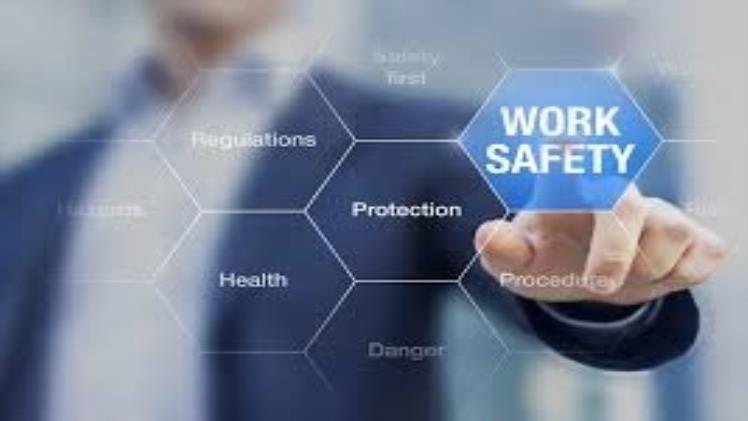Ensuring Workplace Safety: Understanding Regulations
Workplace safety regulations are a critical component of modern employment practices, designed to protect the health and well-being of employees across various industries. These regulations serve as a framework for creating safe working environments, minimizing hazards, and ensuring that both employers and employees understand their rights and responsibilities. The evolution of workplace safety regulations can be traced back to the early 20th century, when industrialization led to a surge in workplace accidents and fatalities.
As a response, governments began to implement laws aimed at safeguarding workers, culminating in the establishment of comprehensive regulatory bodies. The significance of workplace safety regulations extends beyond mere compliance; they foster a culture of safety that can enhance productivity and employee morale. When workers feel secure in their environment, they are more likely to perform at their best, leading to increased efficiency and reduced turnover rates.
Furthermore, a commitment to safety can bolster a company’s reputation, making it more attractive to potential employees and clients alike. In this context, understanding the intricacies of workplace safety regulations is essential for both employers and employees, as it lays the groundwork for a safer and more productive work environment.
OSHA Regulations and Compliance
The Occupational Safety and Health Administration (OSHA) is the primary regulatory body responsible for enforcing workplace safety standards in the United States. Established in 1970, OSHA’s mission is to ensure safe and healthful working conditions by setting and enforcing standards, providing training, outreach, education, and assistance. OSHA regulations cover a wide array of industries, addressing various hazards such as chemical exposure, heavy machinery safety mats, fall protection, and ergonomics.
Compliance with these regulations is not merely a legal obligation; it is a moral imperative that reflects an organization’s commitment to its workforce. To achieve compliance with OSHA regulations, employers must first familiarize themselves with the specific standards applicable to their industry. This involves conducting thorough assessments of workplace hazards and implementing appropriate safety measures.
For instance, in construction settings, employers must adhere to standards related to scaffolding, personal protective equipment (PPE), and fall protection systems. Regular audits and inspections are essential to ensure ongoing compliance, as they help identify potential violations before they result in accidents or injuries. Failure to comply with OSHA regulations can lead to significant penalties, including fines and increased scrutiny from regulatory agencies.
Understanding the Role of Safety Inspections
Safety inspections play a pivotal role in maintaining workplace safety by identifying hazards and ensuring compliance with established regulations. These inspections can be conducted internally by designated safety personnel or externally by regulatory agencies such as OSHThe frequency and scope of inspections may vary depending on the industry, the size of the organization, and the specific risks associated with the work being performed. Regular inspections not only help identify existing hazards but also serve as a proactive measure to prevent future incidents.
During a safety inspection, various elements are evaluated, including equipment condition, employee adherence to safety protocols, and overall workplace organization. For example, in a manufacturing facility, inspectors may assess machinery for proper guarding mechanisms, check for adequate ventilation in areas where hazardous materials are used, and ensure that emergency exits are clearly marked and accessible. The findings from these inspections are crucial for developing corrective action plans that address identified deficiencies.
Moreover, documenting inspection results provides valuable insights into trends over time, enabling organizations to make informed decisions about resource allocation and safety improvements.
Employee Training and Safety Protocols
Employee training is an integral aspect of workplace safety that empowers workers with the knowledge and skills necessary to recognize hazards and respond appropriately. Effective training programs should be tailored to the specific needs of the workforce and the unique risks associated with their roles. For instance, employees in a chemical manufacturing plant may require specialized training on handling hazardous substances, while those in a construction environment may need instruction on fall protection techniques and equipment usage.
Safety protocols should be clearly communicated during training sessions and reinforced through ongoing education initiatives. This can include regular refresher courses, hands-on demonstrations, and simulations of emergency scenarios. Engaging employees in discussions about safety practices fosters a sense of ownership over their well-being and encourages them to actively participate in maintaining a safe work environment.
Additionally, organizations should establish clear reporting mechanisms for employees to voice safety concerns or suggest improvements without fear of retaliation.
Implementing Emergency Response Plans
An effective emergency response plan is essential for mitigating the impact of unforeseen incidents in the workplace. Such plans outline procedures for responding to various emergencies, including fires, chemical spills, natural disasters, or active shooter situations. Developing a comprehensive emergency response plan involves assessing potential risks specific to the workplace and creating protocols that address each scenario.
Training employees on emergency response procedures is crucial for ensuring that everyone knows their roles during a crisis. Regular drills should be conducted to practice evacuation routes, communication protocols, and first aid procedures. For example, in an office setting, employees should be familiar with the location of fire exits and assembly points outside the building.
In contrast, workers in a laboratory may need training on how to contain chemical spills safely. By preparing employees for emergencies through realistic simulations and clear communication of procedures, organizations can significantly reduce panic and confusion during actual events.
Maintaining a Safe Work Environment
Regular Maintenance is Key
Regular maintenance of equipment and facilities is essential for preventing accidents caused by malfunctioning machinery or unsafe conditions.
Encouraging Open Communication
Employers should encourage open communication regarding safety concerns and actively seek employee input on potential improvements. This collaborative approach can lead to innovative solutions that enhance workplace safety. For instance, implementing ergonomic assessments can help identify ways to reduce strain on employees performing repetitive tasks.
Investing in Personal Protective Equipment
Additionally, organizations should invest in appropriate personal protective equipment (PPE) tailored to the specific hazards present in their work environment. Providing employees with high-quality PPE not only protects them from injury but also demonstrates an employer’s commitment to their well-being.
Regulatory Updates and Changes
Workplace safety regulations are not static; they evolve over time in response to emerging risks, technological advancements, and shifts in societal expectations. Regulatory bodies like OSHA regularly review existing standards and may introduce new regulations or amend existing ones based on research findings or industry feedback. Staying informed about these updates is crucial for organizations seeking to maintain compliance and ensure employee safety.
Employers should establish processes for monitoring regulatory changes that may impact their operations. This can involve subscribing to industry newsletters, attending safety conferences, or participating in professional organizations focused on workplace safety. By proactively adapting to regulatory changes, organizations can avoid potential penalties while enhancing their safety practices.
Furthermore, engaging employees in discussions about new regulations fosters a culture of continuous improvement where everyone is invested in maintaining a safe work environment.
Importance of Compliance and Consequences of Non-Compliance
Compliance with workplace safety regulations is not merely a legal obligation; it is essential for protecting employees’ health and well-being while safeguarding organizational integrity. Non-compliance can lead to severe consequences that extend beyond financial penalties. Organizations found in violation of safety regulations may face increased scrutiny from regulatory agencies, resulting in more frequent inspections or audits.
Moreover, non-compliance can have detrimental effects on employee morale and retention rates. When workers perceive that their employer does not prioritize their safety, it can lead to decreased job satisfaction and increased sick pay. In extreme cases, workplace accidents resulting from non-compliance can result in serious injuries or fatalities, leading to devastating emotional impacts on families and communities as well as significant legal repercussions for the organization involved.
Therefore, fostering a culture of compliance is not only about adhering to regulations; it is about valuing human life and creating an environment where employees feel safe and supported in their work endeavors.






